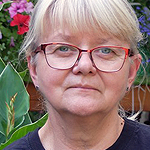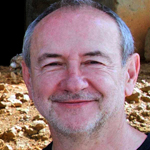Igarapé near Rio Daraá, tributary of Rio Negro, Amazonas, Brazil
8th place in Biotope Aquarium Design Contest 2019
Netherlands. Malou Claire

Volume: 648 L
Dimensions: 180x60x60 cm
List of fishes: Paracheirodon simulans, Dicrossus filamentosus, Hemigrammus ocellifer, Poecilocharax weitzmani, Nannostomus marilynae, Aspidoras pauciradiatus, Copella meinkeni.
List of plants: N/A
Description of decorations: The bottom layer is made of fine, light brown-yellowish sand with a mixed size of 0.5-2mm. There is peat on top of it to simulate older organic matter and to lower the pH. There are also a couple of round pebbles to be found between the leaves and twigs. Next to it there are seedpods like the so called ‘monkey-pods’ fallen from Eschweilera tenuifolia during the rainy season and carried away by the forest stream. Driftwood and locally collected branches and leaves (like beech and alder) similar to those found in biotope, covered by algae. On top of it there is a fine layer of deposits of vegetable detritus.
Description of equipment: The aquarium is equipped with two canister filters; the Eheim professionel 3 (1700l/h) and the JBL CristalProfi e901 (900 l/h). The lighting is made of two 95 cm CREE-ledstrips (6500K) combined with an RGB strip. These are powered by a computer with a specially designed program to simulate sunrise and sundown in the Amazon rainforest. The water is heatened by a Hydor external heater.
Water parameters: The water looks clear but stained with a yellow-reddish tone. It is soft with a pH of 6.2, a KH of 0-1 and GH of 0-1. TDS is 58 ppm and the conductivity is 112 µS/cm. These values are reached by the use of a mix of RO water or rainwater and tapwater. The temperature of the aquarium is kept at 26°C.
Additional info: I made the background of foam, epoxy and sand all by myself to simulate the bank of the forest stream where the trees and other plants grow. Some fish shelter overthere. The big pieces of wood are integrated in this background, and on the left side of the aquarium is a cave which can be entered by the fish on two sides; one entirely on the left side and one more from the front/right. Every 3 weeks there is a 25% waterchange which contains approximately 75% RO water and 25% tapwater (which is pretty soft here; pH 7 and KH/GH 3-4).
INFORMATION ABOUT BIOTOPE
Description of the area surrounding the biotope: The Rio Daraá is a leftbank tributary of the middle Rio Negro, just past the city Santa Isabel do Rio Negro in Amazonas state in Brazil.
To know more about the Rio Daraá, we first have to understand the Rio Negro. The Rio Negro rises in Colombia, where it is known as the Guainía, before joining with the Casiquaire on the border with Venezuela. After flowing for about 1700 km, it flows into the Amazon at Manaus, Brazil. The Rio Negro is the world’s largest tributary and the world’s largest blackwater river. Its annual flow exceeds that of all the rivers of Europe combined. The Rio Negro is a seasonal river in the sense that it has fairly predictable seasonal fluctuations in water level during most years. It begins raining earlier in the lower Rio Negro drainage than in its upper reaches. The rainiest months in the lower Rio Negro are between December and May, whereas in the middle course they are between March and July. At the Rio Daraá, February is the month with the heaviest rainfall and October is the month with the least rainfall. Water level usually varies about 7 meters from low to high tide, but a maximum difference of 16 meters is possible. During low water periods you can find entire beaches formed by fine, almost white sand. Some cataracts are confronted within 20-30 km of the mouths of the left bank tributaries of the upper Rio Negro, and they indicate the presence of the Guiana Shield. Upstream the Rio Daraá there are also some waterfalls flowing over big granite rocks like the ‘cachoeira do Aracu’. Along the riverbanks of Rio Daraá and the surrounding forests a lot of trees and bushes are growing, like palmtrees (Leopoldina pulchra and Astrocaryum jauari), Smilax regelli, locally known as ‘sarsaparillas’, Pseodobombax munguba and Eschweilera tenuifolia. There are also many bushes like Licania stewardii, also known as ‘acará-acú’ and Myrciaria dubia, known as ‘camu-camu’. Many fish can be found along the riverbanks to find their shelter between these bushes and fallen branches and to eat the fruits and seeds carried by these plants. Its hard seedpods are cracked open by monkees and some fall into the water which form part of the diet of the fish who live here. During the period of inundation small fishes move upstream within the river’s tributaries and then laterally into the flooded forest itself to feed and reproduce, before returning to the tributaries when the waterlevel drops. As you move deeper into the dense ‘terra firme’ forest you can find many small shallow rivers or forest streams, also known locally as an ‘igarapé’, slowly flowing through the dense forest. There is a presence of overhanging riparian vegetation and many fallen leaves and twigs on the ground. You can hear many birds singing in the background. The coordinates of this particular igarapé are 0.4S and 64.8W. It is close to the mouth of the Rio Daraá.
Description of the underwater landscape of the biotope: The Rio Negro and its many tributaries, like the Rio Daraá, are stained by humic acids or compounds due to immense layers of leaves and twigs. Igarapés are characterised by thick, often overhanging, riparian vegetation and substrates covered in fallen branches, tree roots and leaf litter. Therefore it has its unique dark color, ranging from light brown to almost entirely black. The tropical sun is streaming in through the canopy just to light up a few places in the water. The water is shallow, less than 1 meter in most places, and the bottom is thoroughly covered with leaf litter. The sheer density of fish is therefore incredible. It’s also likely that just a few dozen kilometers further down there is another igarapé that contains a completely different set of species from the previous one, and often including species not found anywhere else in the Amazon. It happens that igarapés are extremely diverse in aquatic fauna and very distinct from one another.
Description of the parameters of the habitat: The Rio Negro drains three principal geological formations, that is, the ancient Guiana Shield, late Cretaceous to early Tertiary Lowlands and Quaternary Lowlands. In general the rocks, and derived soils, of the Rio Negro basin are acidic and extremely poor in chemicals associated with nutrients. The Rio Negro is chemically one of the poorest rivers in the world. It is also referred to as ‘slightly contaminated distilled water’, according to Sioli (1967). In the absolute concentrations of major elements, Rio Negro is very similar to rainwater (Gibbs, 1971). The blackwater rivers are extremely poor in dissolved nutrients because the geology it drains had very impoverished soils. The rivers are very poor in nearly all of the major elements, especially phosphorous, calcium and potassium. The conductivity is somewhere between 8-10 µS/cm. The most striking chemical characteristic of the Rio Negro is its low pH or high acidity. The pH ranges from about 3.6-5.8, depending on the exact site and time of the year. No exact measurements are known from this particulair igarapé, but it is similar to those known of the Rio Daraá (pH 3.9). The transparency ranges between about 0.9-1.5m. Because it is darker in color than for example clearwater rivers of the Amazon, it absorbs more solar radiation and is thus slightly warmer. The water temperatures are about 28-31 degrees Celsius. During the low water period, when many lakes and pools become shallow, super-heating can take place and temperatures have been recorded in excess of 35 degrees Celsius. The waters can become very deoxygenated due to thermal stratification, decomposition or organic matter and because of super-heating.
List of fishes and invertebrates occurring in the nature biotope: Some igarapés have more species of freshwater fish than whole countries. Close to the water’s edge among the leaf litter and submerged roots, you can find many fishspecies like checkerboard cichlids (Dicrossus filamentosus), small pairs and groups of Apistogramma diplotaenia and Apistogramma hyppolytae, dwarf pike cichlids (Crenicichla notophthalmus), sailfin tetra (Crenuchus spilurus), an abundance of pencilfish (Nannostomus eques/marilynae/marginatus/
List of plants found in the nature biotope: The production of aquatic herbaceous plants in especially igarapés is very limited because of the poor nutrient quality of the river. The relatively poor transparency of blackwater rivers is due to the organic plant compounds that color the water, hence preventing better light penetration. Also a lot of sunlight is blocked by the thick capony of leaves by the dense vegetation.
Threats to the ecology: There are many threats to the Amazon rainforest, like goldmining, hydroelectric dams and agriculture, which cause massive deforestations and endangering the lives of local populations. Goldmining is generally very destructive to the environment. In order to mine, trees and vegetation are cleared and burned. With the ground completely bare, large scale mining operations use huge bulldozers and excavators to extract the metals and minerals from the soil. Agricultural expansion and intensification are also major threats to tropical biodiversity. In addition to the direct removal of native vegetation, agricultural expansion often elicits other human‐induced disturbances, many of which are poorly addressed by existing environmental legislation and conservation programmes. This is particularly true for tropical freshwater systems, where there is considerable uncertainty about whether a legislative focus on protecting riparian vegetation is sufficient to conserve stream fauna.
But there are also threats on local scale. Recent studies demonstrate that small bodies of water are much more important than scientists previously supposed. Because igarapés are extremely diverse in aquatic fauna and very distinct from one another, it is important to conserve these wonderful places. Igarapés provide potable water for human and livestock consumption; irrigation for valuable fruit and vegetable crops; fish for consumption and ornamental trade. A threat to igarapés are so called ‘dirt roads’. These are roads made of sand which cross and cut off the small forest stream. It creates a small dam, leading to sand and clay accumulates and the stream flooding its banks. Interruption of the water flow results in a barrier to the movement of fauna. Fewer fish species live upstream of small dams. There is erosion and silting up of the rivercourse on the other side of the dirt road and little river beds are exposed. This will eventually cause loss of habitat diversity; less vegetation and therefore loss of fish species.
Sources of information:
”Check List of the Freshwater Fishes of South and Central America”
Roberto E. Reis, Sven O. Kullander and Carl J. Ferraris
”Bleher’s Discus Volume 1” – page 354-372
Heiko Bleher
”Río Negro, rich life in poor water: Amazonian diversity and foodchain ecology as seen through fish communities”
Michael Goulding, Miriam Leal Carvalho and Efrem G. Ferreira
https://www.researchgate.net/
”A Contribution to the Chemical Characterization of Rivers in the Rio Negro Basin, Brazil”
Ivo L. Küchlera, Norbert Miekeley and Bruce R. Forsberg
https://www.researchgate.net/
”Water temperature differences in interfluvial palm swamp habitats of Paracheirodon axelrodi and P. simulans (Osteichthyes: Characidae) in the middle Rio Negro, Brazil”
Bruce Gavin Marshall, Bruce Rider Forsberg, Laura Lorraine Hess and Carlos Edwar de Carvalho Freitas
https://www.researchgate.net/
https://www.gbif.org/
https://www.gbif.org/
https://www.gbif.org/
https://www.gbif.org/species/
https://www.flickr.com/photos/
http://www.tfhmagazine.com/
https://www.ambiental.media/
https://besjournals.
Comments of the members of the jury of Biotope Aquarium Design Contest 2019

The clear open and light area, juxtaposed against the dark and sheltered half of the tank, was a brave move by this aquarist, but highly commendable. For the named inhabitants, it is colossal — every inhabitant is a dwarf of sorts, and the 180cm length will see them and any successions of their offspring right for many a generation. I’d be amazed if the Dicrossus didn’t start to spawn in the ‘pods’ provided, and the abundance of biofilm will no doubt produce fine grazing for any fry that might appear. This is definitely one of the most complete set-ups in the rankings.

It is one with my favorite aquarium in competition. The video was shot as if it were prepared in the natural habitat of this river. Perfectly mapped tangle of roots, branches covered with a biocover. Very interesting video. A great job.

Absolutely beautiful arrangement, perfectly done. I am just not sure if Aspidoras pauciradiatus is the real natural partner for the other species in the area.

It is a very beautiful work. The leaves at the bottom and the roots in a natural arrangement make conditions for the fish to develop correctly. Well done, congratulations!

This biotope looks healthy and beautiful. The algae covered on the driftwood and branches showed the ecosystem were in good form. It’s a praiseworthy act that the electric equipments were programmed to simulate the natural habitat.
